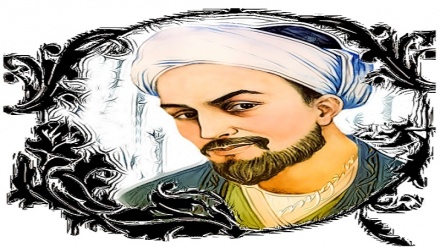Iranian Notables, Sources of Global Honor (88)
As a reminder, it was previously said that Seyed Ali Hamedani, popularly known as Sultan al-Aarefin, spent his lifetime for promotion of the sacred religion of Islam, purification of soul, and education of the true followers of righteousness and truth in Kashmir and Tajikistan. Today, we continue this discussion.
Seyed Ali Hamedani is the renowned mystic of 8th Century AH. The scientists and the virtuous referred to him as Sultan al-Aarefin; and his followers granted him the title of King of Hamedan. In Tajikistan, he is popularly known as Hazrat Amir Jaan.
Mir Seyed Ali Hamedani was born in the city of Hamedan in the year 714 AH. Upon completion of his preliminary studies, he attended the classes of well-known lecturers, learning the Science of Hadith, and mysticism, and excelling in purification of soul and spiritual growth. Upon the completion of this phase of studies, he was urged by his teachers to promote the sacred religion of Islam, overseas. He maintained this responsibility for the rest of his life, promoting sacred religion of Islam and grooming students. He was highly respected by people, from all walks of life, in the majorities of Iranian, Central Asian, and Indian cities. In addition to piety, he highly excelled in sciences, mastering the traditional and rational sciences of his era, and writing countless works in this domain. His writings, which stand at 110 volumes of books, treatises, and collection of poems, are of significance in content, subject, and prose and verse styles. This works cover the domains of philosophy, ethics, mysticism, and literature, presenting educational and spiritual texts. The precision of this great mystic in creation of works in prose and verse has led to creation of interesting writings.
Upon the demise of Seyed Ali Hamedani, his children and grandchildren in Hamedan, Kashmir, Balkh, and other regions, continued his activities and made every effort to guide people.
Seyed Ali Hamedani is a genius Iranian, who via traveling to the Indian Subcontinent, Pakistan, Transoxiana, Shaam, and Arab lands carried out religious and cultural activities. Researchers mostly believe that his utmost efforts led to promotion of divine religion of Islam and Farsi language and literature among the residents of Kashmir.
According to the Iranian Islamic thinker, Martyr Morteza Motahari, the Iranian philosopher and mystic, Mir Seyed Ali Hamedani, highly served Islam in Kashmir and was an honorable Islamic figure who groomed thousands of students over there. The people of Kashmir continue to respect him and his tomb has turned into site of pilgrimage for the people of that region.
The Western Philosopher, Henry Corbin, has attributed the promotion of many sciences and arts in India’s Kashmir to the hard efforts of Mir Seyed Ali Hamedani to this end. This Western philosopher notes that countless researchers and historians believe that the efforts of Hamedani and his colleagues in the Indian Subcontinent and Kashmir have mainly contributed to promotion of many types of art in that region.
According to the researchers of Hamedani’s works, in presentation of mystical teachings, he has made use of the writings and teachings of well-known representatives of different literary and mystical currents such as the writings of Abu Hamed Ghazali, Attar, and Sa’adi.
Mir Seyed Ali Hamedani traveled to Kashmir three times in his life. In one of his journeys to Kashmir, he headed a delegation, comprised of 700 of his associates, students, and followers, who were skilled mystics and artists, earning the respect of the people of that region. It is said that a number of artists, such as weavers, potters, and calligraphers accompanied Hamedani in this journey. Thus, researchers, such as Henry Corbin, believe that Hamedani highly contributed to promotion of arts in Kashmir.
In Kashmir, Hamedani held debates with Hindu and Buddhist figures; in the majority of which he succeeded.
During his five year residence in Kashmir, 37,000 individuals converted to Islam. Upon his endless efforts, people of Kashmir constructed mosques.
The local rulers implemented his instructions, while his teachings gave rise to many divine blessings in that region. Upon his efforts, Shiism was highly promoted by Hamedani in Kashmir.
Hamedani continuously spoke about religious beliefs with people; preached them, and expressed ethical topics of importance with due regard to the potentials and capacities of people. Concurrent with this religious movement, he also managed to promote Farsi language in that land. The fact of the matter is that all of his cultural and social activities, which were constructive and beneficial, maintained Islamic content and spirit, and were usually in Farsi language.
He rendered valuable and ever-lasting services in Jammu and Kashmir. For instance, he constructed the first seminary in Kashmir. Scholars traveled from different parts of Kashmir to attend this seminary.
Seyed Ali Hamedani also founded a library in Kashmir, presenting many sources of Islamic sciences and teachings in Arabic and Farsi languages. Significant importance was attached to this library, which captured the attention of the regional rulers and scientific figures.
MR/ME


